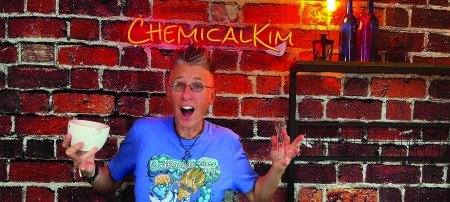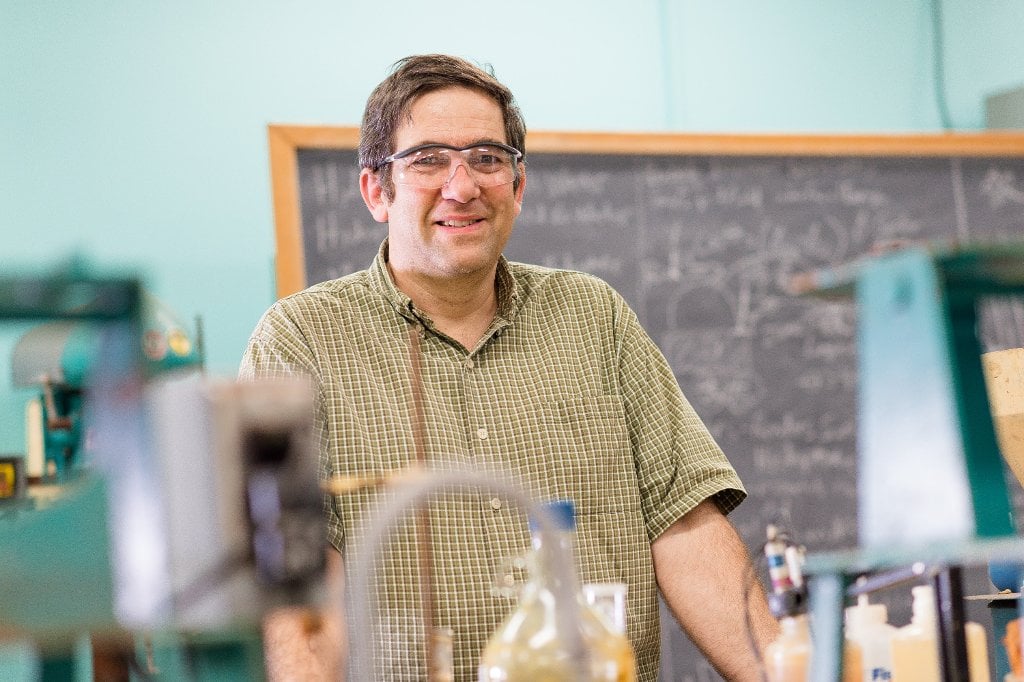Whey to Go: Tech Engineer Solves Dairy Waste Problem
The little Miss Muffets of the world may once have created a booming market for whey, but now dairies are awash in this sugary byproduct of cheese-making. And getting rid of it can be expensive and messy.
There's plenty of whey to go around. In 2005, US cheese production topped 9 billion pounds, and for each pound of cheese, about nine pounds of wastewater is created, most of it whey. That's about 30 pounds of cheese per American every year. "I think my daughters eat that in cheese sticks every week," says Joseph Holles, an assistant professor of chemical engineering.
Whey is mainly water—about 95 percent—plus small amounts of solids, including 3 percent lactose, or milk sugar. Dairies traditionally got rid of their excess whey by spraying it on agricultural land. The water simply irrigated crops and pasture, but the lactose leached into the local watershed, where it sucked oxygen from lakes and streams, killing fish and collapsing the ecosystem.
The problem was so serious that Wisconsin implemented stringent restrictions on field-spreading of whey. The remaining alternative is expensive and far from ideal—to run the liquid through sewage treatment facilities.
Holles, an expert in heterogeneous catalysis, received a grant from Membrane Process & Control, of Edgar, Wis., to figure out a way to address the problem, and he chose catalytic wet oxidation, a process commonly used in sewage treatment.
Working with graduate students Yah Nan Chia and Michael Latusek, Holles took advantage of the sugar's affinity for oxygen. The team added O2 to a 3 percent lactose-water solution in the presence of a catalyst and applied heat and pressure.
When the system reached equilibrium, essentially 100 percent of the lactose had broken down into carbon dioxide and water.
"It turned into soda water," said Holles, harmless enough to pour down the drain without being processed in a treatment plant, if not into a glass of scotch.
The carbon dioxide emitted during the process is a greenhouse gas, but since it has its origins in renewable resources—in this case, cow chow—it does not increase the atmospheric carbon dioxide levels and is thus considered carbon neutral.
The team also wanted to see if they could make something that was useful as well as benign from lactose. By tweaking the reaction and the catalyst, they created lactobionic acid. The life-saving chemical is used to preserve donor organs awaiting transplant, as well as to make cosmetics, detergents and pharmaceuticals; it's also an additive in sports drinks.
Both processes, said Holles, are "pretty simple. In theory, any mom-and-pop dairy in Wisconsin could do it."
However, breaking down lactose comes with a curse that might eventually prove a blessing in times of energy shortage: "It generates tremendous amounts of heat," he said. "It's very similar to burning gasoline."
Generating energy from whey is an intriguing possibility, but Holles admits that he'd probably have to hand that project off to another engineer.
"Somebody else," he said, "would have to design a reactor."
Michigan Technological University is a public research university founded in 1885 in Houghton, Michigan, and is home to more than 7,000 students from 55 countries around the world. Consistently ranked among the best universities in the country for return on investment, Michigan’s flagship technological university offers more than 120 undergraduate and graduate degree programs in science and technology, engineering, computing, forestry, business and economics, health professions, humanities, mathematics, social sciences, and the arts. The rural campus is situated just miles from Lake Superior in Michigan's Upper Peninsula, offering year-round opportunities for outdoor adventure.




Comments